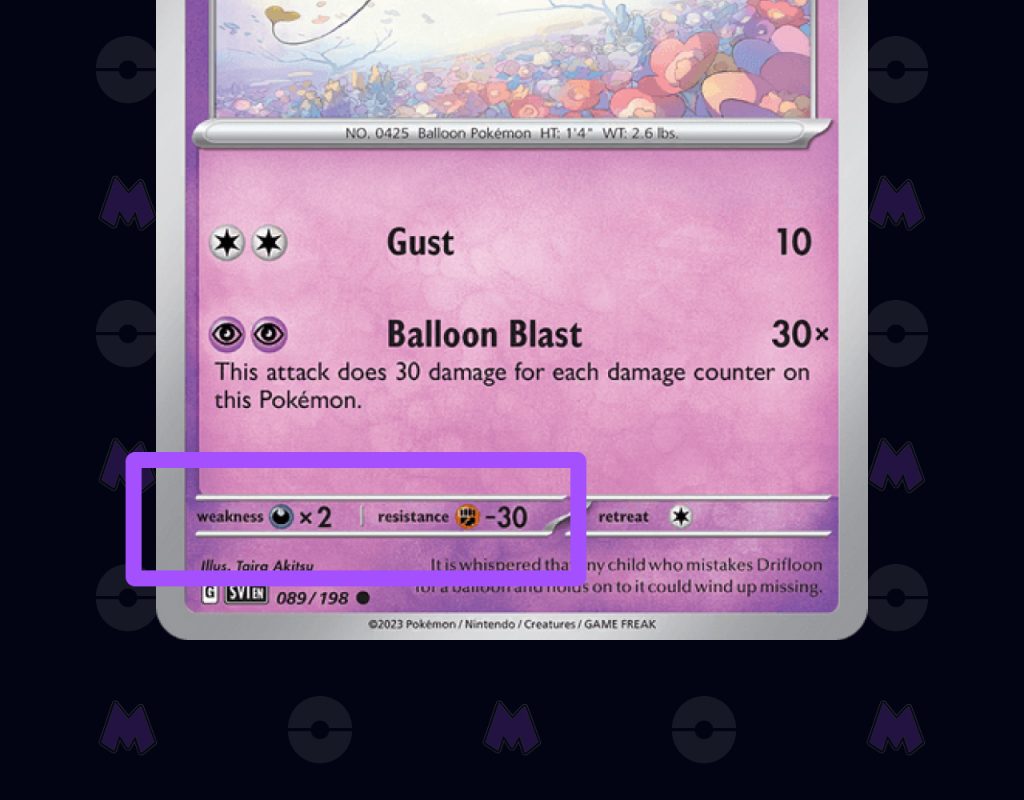Damage counters vs damage

In the Pokémon TCG, when calculating damage, you might come across cards mentioning damage counters instead of direct damage. This typically happens with certain Pokémon attacks or abilities, as well as trainer cards. When a card instructs you to add damage counters, it’s straightforward—no need to factor in weaknesses, resistances, or any other effects.
Each damage counter packs a punch, representing 10 points of damage. So, if you spot 3 damage counters, you’re looking at a total of 30 damage.
Now, damage itself plays by different rules. It’s susceptible to weaknesses, resistant to certain types, and can be influenced by other game effects.
Calculate your side of the field

First things first, take a look at the base damage listed next to your active Pokémon’s attack. This is your starting point when calculating damage.
Now, let’s dive into the exciting stuff—damage effects! Whether it’s from trainer cards, Pokémon abilities, or attack effects, these can all spice up the action. Keep an eye out for stadiums and certain items too—they’re game-changers, capable of boosting or even reducing the damage.
But hey, here’s a crucial tip: if an attack doesn’t dish out any damage, you can kick those effects to the curb. Yep, you heard it right—all those effects get ignored if there’s no damage involved.
Calculate opponents side of the field
Alright, you’ve crunched the numbers and know the damage you’re packing. Now, it’s time to size up your opponent’s side of the board and factor in what might throw a wrench in your plans.
Keep your wits about you! Take a good look at your opponent’s setup and see what might put a damper on your damage output.
Weakness & resistance

When calculating damage, keep an eye out for weaknesses—they’re your golden ticket to amping up your attack damage. And sometimes, it’s not just the usual x2 boost; you might hit even harder!
Here’s a handy guide to get you started:
- Fire Pokémon? They crumble before Water’s might.
- Water types? Zap ’em with Electric, mow ’em down with Grass, or bring the metal heat.
- Grass Pokémon? Torch ’em with Fire or mess with their minds using Psychic.
- Lightning types? Bring ’em to their knees with a solid Fighting-type hit.
- Psychic Pokémon? Darkness is their kryptonite.
- Fighting types? They might pack a punch, but they’re vulnerable to Psychic, Grass, or water.
- Colourless Pokémon? A well-placed Fighting-type move should do the trick.
- Darkness Pokémon? Light ’em up with Fighting power!
- Metal Pokémon? Get ’em hot and bothered with Fire attacks.
- Dragons? They’ve got no specific weakness.
Remember, sometimes Pokémon can surprise you with multiple weaknesses, so always keep your eyes peeled!
It’s not just about dealing damage—it’s about overcoming your opponent’s defenses too. Resistance can throw a curveball into your plans!
When your Pokémon faces off against a resistant foe, it’s not always a simple halving of the damage. It’s a bit trickier than that! You’ll often see a reduction of either 30 or 20 damage, which you’ll need to subtract from your calculated damage.
Now, let’s break it down by type:
- Fire Pokémon? No resistance here.
- Water Pokémon? No resistance here.
- Grass Pokemon? They’ll stand firm against Water and Fighting types.
- Lightning Pokémon? They’re tough against metal.
- Psychic Pokémon? They’ll stand their ground against Fighting types.
- Fighting Pokémon? No resistance here.
- Colourless Pokémon? No resistance here.
- Darkness Pokémon? No resistance here.
- Metal Pokémon? They’ll shrug off Grass attacks like it’s nothing.
- Dragons? No resistance here.
Always be mindful of your opponent’s defenses and adjust your strategy accordingly.
Trainer cards, abilities & attack effects
Just like you’ve got cards that can pump up your Pokémon’s power, your opponent’s got tricks up their sleeve too. Keep an eye out for cards that might cushion the blow, reducing the damage you’re about to dish out.
And don’t forget about the lingering effects from your opponent’s last turn—those can still come back to bite you! From sneaky abilities to tricky attack effects.
Stadiums, items, and other trainer cards add another layer of complexity to the mix. They could tip the scales in your favour or throw a wrench in your plans, so be prepared for anything!
Add damage counters
Alright, let’s wrap it up with the final piece of the puzzle!
For every chunk of 10 damage you dish out, put a damage counter onto your opponent’s Pokémon. Keep piling on until you’ve reached their HP limit. Once you’ve exceeded their HP, that Pokémon is down for the count and gets sent packing to the discard pile.
And there you have it! You’ve now mastered the art of calculating damage and navigating through all the twists and turns that can affect it. From trainer cards to abilities, you’ve seen it all.
Now, go forth, and unleash your newfound knowledge in your next game. Remember, adaptability is key, so stay sharp, stay focused, and let’s make every battle count!
Team Maniax, shuffling out – see you next time!


Leave a Reply